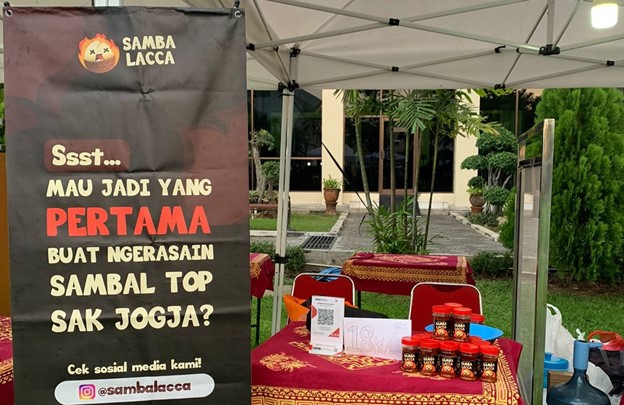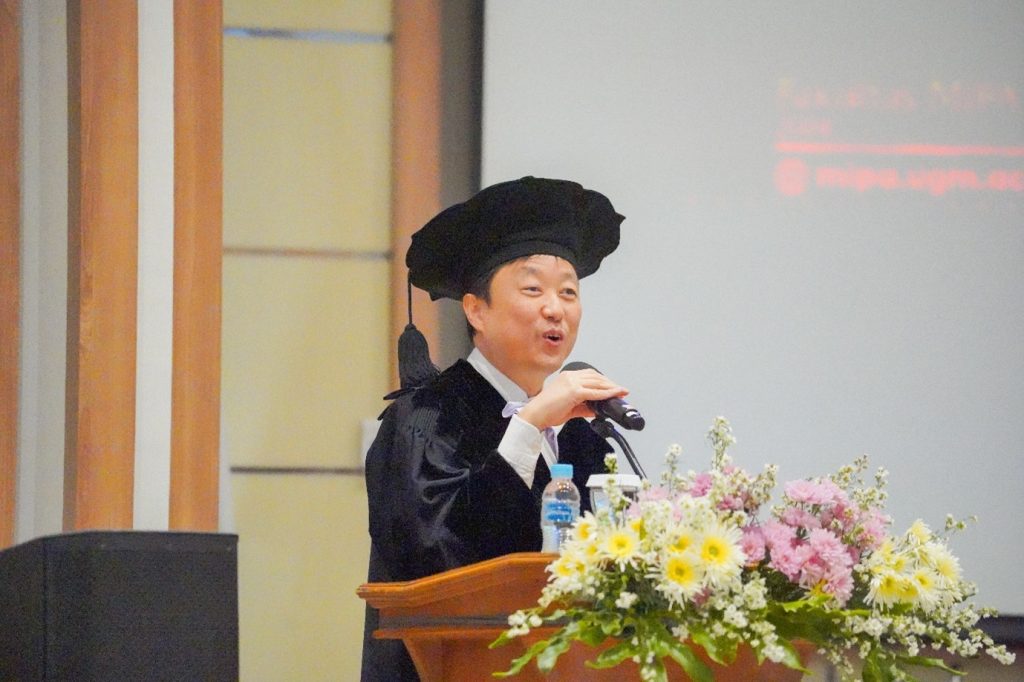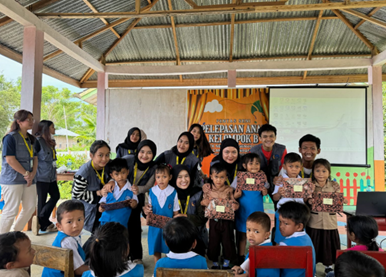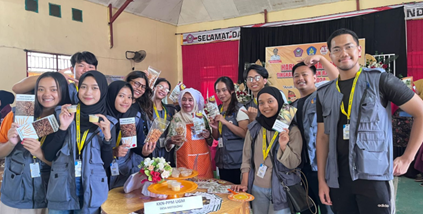
Cerita Nugi, Mahasiswa FMIPA UGM Dorong Petani Desa dengan Kreasi Hasil Bumi Jadi Sambal Salak
Sambal merupakan salah satu makanan favorit masyarakat di Indonesia dengan beragam kreasi yang dibuat sesuai dengan daerahnya. Hal ini menjadi salah satu peluang bagi Anugrah Yuwan Atmadja, yang akrab disapa Nugi, mahasiswa Ilmu Komputer FMIPA UGM untuk turut mendorong kreasi masyarakat di kawasan Desa Purwobinangun. Pada mulanya, melalui program pengabdian PPK Ormawa 2022, Nugi berhasil mendirikan Salacca Space sebagai rumah inovasi pengolahan salak di Desa Purwobinangun. Salah satu produk unggulan yang dikembangkan adalah Sambalacca, atau sambal salak yang diproduksi menggunakan hasil bumi khas Desa Purwobinangun.
“Produk ini dapat menjadi pendobrak usaha-usaha lainnya mulai dari petani salak sebagai supplier bahan baku dan rempah-rempah lainnya serta usaha restoran yang terlibat. Dukanya adalah ketika harga cabai dan bahan baku lainnya sedang mengalami kenaikan,” papar Nugi.
Sambalacca dapat dibeli dengan harga Rp18.000 untuk 1 botol dengan ukuran 120gram. Saat ini, penjualan Sambalacca berfokus pada penjualan B2B ke salah satu restoran yang ada di Godean bernama Tamanjiwo Resto. Beberapa menu yang disediakan di restoran ini menggunakan sambal salak dari Sambalacca sebagai menu pelengkapnya.
“Kesannya adalah sangat senang ketika produk ini dapat membantu petani salak yang mengalami kesulitan menjual hasil bumi mereka karena harga salak yang kian menurun. Dengan adanya produk ini, salak dapat dijual dengan nilai jual yang tinggi,” papar Nugi.
Dalam hal ini, Nugi turut berharap bahwa bisnis ini semoga dapat dikembangkan lebih jauh lagi bersama teman-teman yang lain setelah lulus kuliah. Merujuk pada upaya Nugi tersebut menjadi implementasi dari SDGs nomor 4 yaitu Pendidikan Berkualitas melalui peningkatan keterampilan mahasiswa di bidang wirausaha dan sosial masyarakt. Selain itu, upaya tersebut menjadi cerminan SDGs nomor 8 yaitu pekerjaan Layak dan Pertumbuhan Ekonomi melalui produktivitas ekonomi petani salak serta nomor 9 yaitu Industri, Inovasi, dan Infrastruktur melalui inovasi hasil bumi masyarakat desa.
Penulis: Febriska Noor Fitriana
Dokumentasi: Anugrah Yuwan Atmadja
























